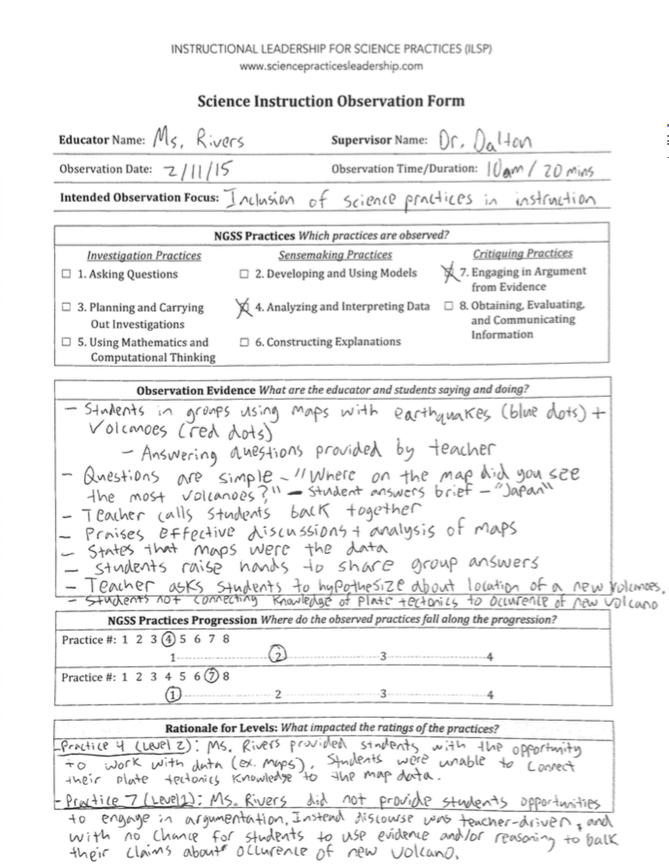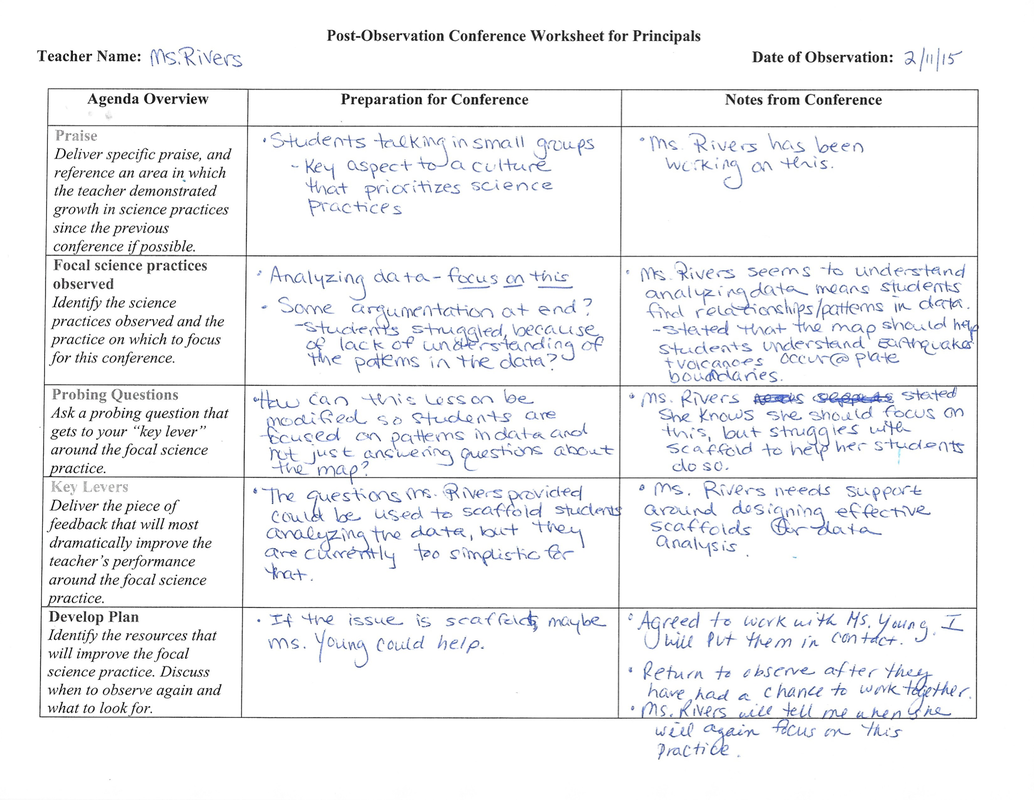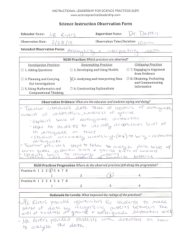Case Study: Grade 4 Conference
|
Focal Science Practices:
Related NGSS Performance Expectations: 4-ESS2-2:Analyze and interpret data from maps to describe patterns of Earth’s features. Transcript
|
Tools
Initial Observation Form
Conference Worksheet
Follow-Up Observation Form
|
|
Ms. Rivers answers a few student questions and then puts students into group to begin the assignment. Similar to her first lesson, she provides the students with a scaffold to support their analysis of the data. However, this time her scaffold is a series of steps to follow geared toward enabling students to discover the pattern in the data. Dr. Dalton observes the students starting to work and then listens in on one student group.
Brett: Okay, here’s the next step: Put the earthquakes in order from most destruction to least. Rachel: Okay, so first A and E, then C, then D, then B. Josh: Now it says we should write the ground hardness next to each earthquake. So A and E are both soft. And C and D are both hard. And B is very hard. Brett: Now we are supposed to answer the question What happens to the amount of destruction as the ground hardness goes from “soft” to “very hard”? Josh: It looks like the earthquake with the biggest destruction number has the softest ground. Brett: You mean, earthquake A? Oh, I see. It is an 8 for destruction. Rachel: And earthquake C has a 7 and hard ground. So that’s a smaller destruction number and the ground is harder. Brett: That pattern keeps going. The earthquakes with the very hard ground have the smallest destruction numbers. Josh: So the answer to the question is that as the hardness goes from “soft” to “very hard,” the destruction goes down. When the students have finished, Ms. Rivers calls the class back together. Ms. Rivers: Okay, so what did we figure out about how the hardness of the ground is related to how much destruction happens? Jessica: We saw that the harder the ground, the less destruction. Ms. Rivers: Give me a thumbs up if you agree with Jessica and a thumbs down if you disagree. The students vote. Ms. Rivers calls on Diego to explain why he agrees. Diego: I agree because we saw that the bigger the destruction numbers, like the earthquake with an 8, the ground was soft. But the lower the destruction numbers, like the earthquake that was a 5, the ground was very hard. Ms. Rivers: Who would like to explain why they think harder ground means less destruction? Mandy? Mandy: I think that if a building is on soft ground and there is an earthquake then the ground isn’t really holding the building tight and the building can move around a lot and fall apart really easily. It might even hurt someone if it falls apart. But if there is hard ground, the building doesn’t move around as much so it probably doesn’t fall apart and hurt people as much. The students continue to discuss the relationships in the data and the reasons why the amount of destruction is related to the ground hardness. Dr. Dalton leaves to go observe another class. |
PLACEHOLDER
|



